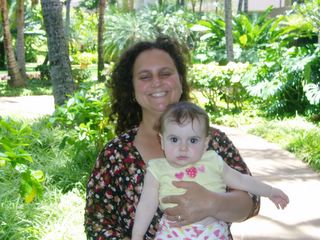On Intelligence
I've been reading this book called "On Intelligence" by Jeff Hawkins. He was the founder of Palm and has been a software & hardware designer for many years, but has also been interested in human and machine intelligence. He took a number of classes in bioscience and was most interested in how the brain actually works. The mistake that Artificial Intelligence (AI) experts made, he argues, is they paid no attention to the inner workings of the brain, or developed a reasonable theory of what intelligence actually is, and instead focused upon emulating human behavior.
Hawkins believes that the brain doesn't work like a computer. Computers are designed to be much faster and possess greater computational power. The AI'ers believe that if we create faster and more powerful computers, we will eventually create a real intelligent computer. Hawkins believes that's the wrong approach. He encourages the reader to look at how the brain works: first, it stores memories, then it retrieves them, and finally makes predictions based upon those memories. This is the crux of intelligence. Pattern recognition doesn't derive from computing pathways, but from reconciling what our senses are capturing with these retrieved memories.
The core component of the human brain is the neo-cortex. That's where most of the action is! It has 6 layers, from L1 to L6. Hawkins demonstrates how different regions of the cortex are hierarchically related. He further illustrates how information is hierarchically stored to mirror the hierarchy of reality! The examples he gives are great, from musical compositions to roadways. What it boils down to is that objects have subobjects which themselves have subcomponents, or a process has subprocesses and so forth. Data merges into higher levels of the hierarchy, percolating all the way to the top. With the example of music, he says "Notes are combined to form intervals. Intervals are combined to form melodic phrases. Phrases are combined to form melodies or songs. Songs are combined into albums."
The organization of information and how it's mentally stored reflects the organization of reality. We don't hear a song in one instant, nor capture all the complexity of an event in one screen shot. Internally in the brain, a song is stored hierarchically to capture the nested structure of reality; the highest part is a pointer to the entire song, the next highest part might store the memories of the phrases, then a lower part will store the intervals, and the lowest man on the totem pole remembers the notes. With an image, complete snapshots are not stored one place in memory. Instead, line segments are stored in lower hierarchical parts of the visial cortex, then shapes composed of these line segments are stored in a higher region, shapes blend into recognizable objects in yet a higher region, and finally what Hawkins calls "large scale relationships" reflecting the entire picture occur on top. Based upon what I've been reading, I interpret the storage of memories as an artistic process, not as a storage of data in a computer.
And how do we recognize patterns in reality? Well, memories reflect the relationships of the compositional components. We remember the sequence of notes in a song. So when we hear a few notes, even if they are in a different key, we remember the relationship of the notes. It's the same with a picture of a face. The face might have a different color, or perhaps part of the face is hidden, but the brain remembers the relationships of the facial components and can make auto-associations based upon what it can view (i.e. it doesn't have to see the entire picture to recognize its contents).
One of the most powerful points in the book is his use of Vernon Mountcastle's idea of a unified cortex algorithm. Mountcastle argued that different parts of the cortex (visual, aural, etc.) essentially have the same operating principles. It's the same signal processing and pattern recognition in all cortical regions. We process what we see, hear, and feel (also smell?!) using the same algorithm. What distinguishes each region are the connections to other parts of the brain and body, relationships to motor activities and responses, and so forth.
I've read about 2/3rds of the book and look forward to the end, which I'm sure will include some discussion about how real machine intelligence could occur with a proper implementation of the "memory/prediction" cortical model. Based upon what I've read, I would highly recommend this book.
Anyone read this or books touching on similar subject matter? Thoughts?













